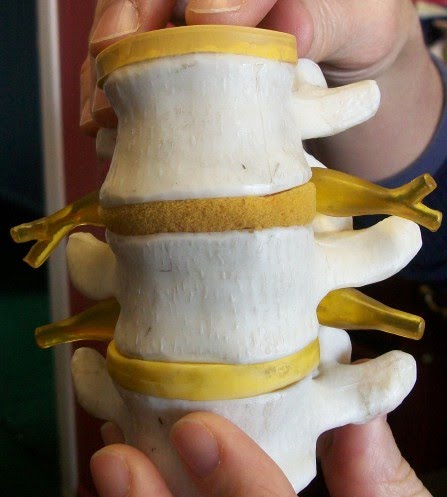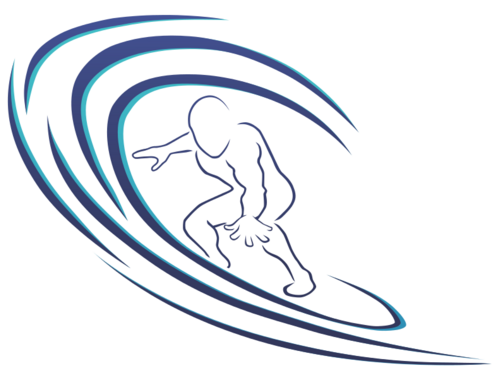Radiculopathy Overview
Before we break down the word radiculopathy, a small amount of anatomy knowledge is necessary. Bear with us!
Most know that nerves are what allow us to feel, sense, and experience things like touch, pain, heat, and pressure. Those nerves are like branches, and they all meet up at the spinal cord, which carries signals from the body to our brain (and vice versa).

The junction between the spinal cord and these ‘peripheral’ nerves that course through the rest of the body is known as the nerve root. The spine is made up of bony vertebrae separated by discs, which are shock absorbers composed of collagen. At every vertebra, the spinal cord gives rise to one paired nerve root, each exiting from either side of the spine. This adds up to a total of 31 paired nerve roots.
Now, back to the word radiculopathy.
It is a broad medical term that encompasses a constellation of patient symptoms and physical exam findings that result from damage or disease to a spinal nerve root (from the word “radiculo-” means “root”).
There are two main types of radiculopathy commonly experienced by people: cervical and lumbar. Cervical radiculopathy describes radiculopathy of the neck (cervical spine) and arms, while lumbar radiculopathy describes radiculopathy of the low back and legs.
What are the symptoms of radiculopathy?
Because the word radiculopathy simply describes a syndrome of pain and other problems from spinal nerve irritation, the exact symptoms experienced depend on which spinal nerve is involved. Although patients can experience a combination of neck or back pain with radiculopathy, the symptoms of radiculopathy are distinct from just low back or neck pain.
Cervical Radiculopathy
Cervical radiculopathy refers to irritation of the nerves that travel from the neck to the arms and hands. This can lead to a sharp, “electrical” pain that goes from the center of the back of the neck down one or both arms (1,2). In addition to this intense pain, some patients can experience numbness or weakness of the arm or hands, because the nerve roots that control the arms and hands come from the cervical spine.
Lumbar Radiculopathy
Lumbar radiculopathy is irritation of the nerve roots in the lumbar spine, which supply the lower half of the body and the lower extremities (3). This can manifest as a sharp pain that travels from the middle of the back down either leg (and may even travel into the toes). A person who is experiencing lumbar radiculopathy may also notice difficulty walking or the feeling of numbness or tingling in the feet or legs. Sometimes, when severe, it can result in weakness in the legs or feet. In rare cases, it may also lead to changes in a person’s bowel movements or bladder sensation or control. If this occurs, you should seek immediate medical care.
What causes radiculopathy?
Many different problems can lead to radiculopathy. The most common causes of radiculopathy in the United States are degenerative spinal changes resulting from the accumulation of “wear and tear” on the spine.
One of the most common degenerative changes in the spine is the development of a disc herniation.
When the intervertebral disc ages, it loses some of its ‘shock-absorbing’ capacity as it loses water content. When this happens, the disc can develop a small tear, allowing the inner contents of the disc to ‘herniate’ into the spinal canal. If these contents touch or compress a nerve root, this may lead to radiculopathy.
In addition to disc herniations, the development of bone spurs can lead to radiculopathy.
The facet joints are specialized joints in the back of the spine that help it to flex forward or extend backward. When these joints age, bone spurs can develop and narrow the area where the spinal nerves are and compress the spinal nerve roots, causing radiculopathy.
The third common type of degenerative change that may lead to radiculopathy is something called a “spondylolisthesis.”
It’s an intimidating word, but what it means is the abnormal slipping of one vertebra relative to another. This can occur when a disc becomes arthritic and no longer does a good job of resisting the stresses of daily life. Spondylolisthesis can lead to the compression of the spinal nerve roots at that level, causing radiculopathy on either side or even both sides.
Conclusion
Radiculopathy can be caused by a number of factors, including herniated discs, and typically leads to pain that travels down a limb and may include numbness or weakness. Radiculopathy may be a sign of a serious medical problem and can cause severe and lifestyle-limiting pain.
If you are experiencing pain as described above, it’s a good idea to consult with your physician to see what your next steps should be.
We have an expert multi-disciplinary group of physicians and health practitioners here at PCSM if you don’t know where to start, too.
Here are two specific, non-invasive treatment recommendations we have for radiculopathy: the McKenzie Method and Dynamic Contraction Technique.
Don’t hesitate to reach out!
References
1. Corey DL, Comeau D. Cervical radiculopathy. Med Clin North Am. 2014;98(4):791-799, xii.
2. Childress MA, Becker BA. Nonoperative management of cervical radiculopathy. Am Fam Physician. 2016;93(9):746-754.
3. Tarulli AW, Raynor EM. Lumbosacral Radiculopathy. Neurol Clin. 2007;25(2):387-405.
